From the properly made foundation depends on the durability of the house and comfort of living in it. In this article, we will talk about the insulation of a belt foundation as a guarantee that the foundation will last for many years, and dampness and cold air will not penetrate into the room.
What is needed thermal insulation
Consider more, why need to carry out insulation of the foundation:
- First, this process provides additional protection for the construction of moisture. The ribbon base is made from concrete - a material with good water-pipe properties. An additional layer of protection, which is the heat insulating coating, protects the foundation from the penetration of excess moisture and increases the durability of the structure.
- Thanks to insulation, the foundation of the house is not terrible temperature drops. This means that it avoids unnecessary loads in the form of compression under the influence of cold and expansion under the influence of heat. This, again, provides long service life of the foundation. It is especially important to carry out insulation if the house is built on a terrain with a bunched soil.
- Good thermal insulation of the foundation allows you to use the basement floor with comfort, for example, you can arrange a workshop there, a gym or another useful room.
- Another plus insulation of the house is saving the cost of heating, which is useful not only for your wallet, but also for nature as a whole.
Warming of a ribbon foundation, photo:
Heat insulating materials
For the insulation of a small-brewed belt foundation, different means are used, but each of them must have the following properties:
- durability;
- reliability;
- bad thermal conductivity;
- minimum water permeability.
In addition to the above characteristics, pay attention to the practicality and price category of materials. When choosing a suitable option, focus on the following points:
- decide with the appointment of the structure: for a residential building it is better to choose more expensive materials, whereas on the economic building it is possible to save;
- consider your wishes regarding the comfort of the room;
- take into account the climate of the terrain and the characteristics of the soil on which the structure is located;
- do not forget about the architecture of the house.
Now let's consider in more detail what materials for the insulation of the foundation are presented on the market in our time:
- Bulk mixtures. These include clamzit and ordinary soil. It should be said that the second option is considered the most budget, but it does not possess all the necessary properties. The land is much worse protects the base of the house from the temperature differences than other materials. As for the ceramisit - he is a good insulation. It includes special porous granules that are able to preserve heat inside the structure. In addition, such a tool does not pass an extra moisture to the room. The insulation of the foundation by clay is carried out at the construction stage. The material is filled with formwork before pouring it with concrete. From above, the base is covered with waterproof film.
- Polystyrene foam. It is placed on the foundation on top of the waterproofing layer - it avoids the wetting and freezing of the insulation. From above, polystyrene sheets are closed with facing materials. If the insulation of the house is carried out from the inside, then instead of the facing, a vapor barrier film is used. The advantages of expanded polystyrene can be attributed: low weight, environmental friendliness, waterproof, durability.
- Polyurethan. This is a new and fairly expensive means, but it is easier to work with it. This material is available in the form of spray in cylinders. To cover them the foundation, it is enough just to spray the polyurethane foam layer on the surface. Another plus of such a technology is that the agent penetrates the smallest pores and the base cracks. The advantages of the material are as follows:
- on the surface, seams and joints are not formed, through which moisture, dampness and cold may fall into the house;
- the tool itself has a good ability to keep heat;
- polyurethane foam is perfectly collapsed with other materials, so it will not go back from the surface of the foundation;
- before starting the process of spraying, you do not need to make any preparatory actions.
- Thermopanels. Their plus is that they perform not only insulating, but at the same time decorative function. They are often used for the outer thermal insulation of the part of the foundation, which protrudes over the surface of the Earth. In the event that you want to insulate in such a way a broken part of the base, the thermopanels will have to be coated with a layer of waterproofing material.
You need to choose material based on your personal wishes and financial opportunities. It should be added that thermopanels and polyurethane foam are considered the highest quality and expensive insulation. Cheaper, but also a good option can be called polystyrene foam. High-quality thermal insulation of your home directly depends on the good processing of the foundation and the proper application of the selected material.
External thermal insulation base of construction
The insulation of a ribbon foundation outside haunted such purposes:
- Protection of the room from the cold, which creates comfortable conditions for living.
- Ensuring the durability of building due to the prevention of the base from temperature differences.
- Creating an obstacle to penetration into the dwelling of underground and stormwater.
- Protection of the moisture-repellent layer from mechanical damage.
- Displacement point dew.
Warming of a belt foundation, scheme:
Consider in detail the process of thermal insulation base of construction. For work, you will need such materials:
- cement;
- gravel;
- sand;
- polystyrene foam;
- geotextile material;
- zit;
- roll Ruberoid;
- polyethylene film;
- bitumen mastic;
- construction mounting foam;
- polyvinyl chloride membranes;
- reinforcing network;
- acrylic adhesive mixture;
- welding equipment;
- hand tools: shovel, trough, scissors.
The technology of insulation of the belt foundation outside:
- The first thing around the perimeter of the building must be pulled out with a trench, its depth should reach a subference under the foundation. The width of the RVA is calculated as follows: 5 cm is added to the index of the average annual depth of the soil.
- The surface of the foundation should be cleaned from the ground and other contaminants, and then thoroughly align. If you need, some defects can be hidden using the cement solution. Remember that the smaller the surface will be, the longer the waterproofing will last.
- Having done this work, you can cover the base geotextile and lay the layer of waterproof material from above. Waterproofing is performed using a coating or everlasting agent.
- The next step on the wall can be attached polystyrene sheets. They should be laid, starting from the bottom limit of the foundation and rising to the floor level. Fontoam fragments are fixed on the surface with acrylic glue applied point in certain places. Applying the slab to the foundation, it must be held in this position for about a minute, so that the glue grabbed.
- Attaching the insulation throughout the perimeter of the building, the joints between individual fragments should be sealing with mounting foam. If you plan to apply the material again, the second layer must be laid so that the upper sheets have covered the slots between the lower.
- The next step on polyethylene film is applied to polyethylene.
- Then the wall is covered with reinforcing grid. Since this material is made of fiberglass, in order to avoid chips on the joints, it is necessary to attach separate elements of the grid of the brass.
- The last stage of the work on the insulation of the foundation is the application of a concrete solution.
- When the design is completely driving, the trench can be filled with the ground again. It is possible to use sand or clamisite instead of the soil - so thermal insulation will be better.
When performing such works, try to make a thicker insulated layer at the corners of the building, because it is in these places the greatest heat loss takes place.
Warming of a ribbon foundation, video:

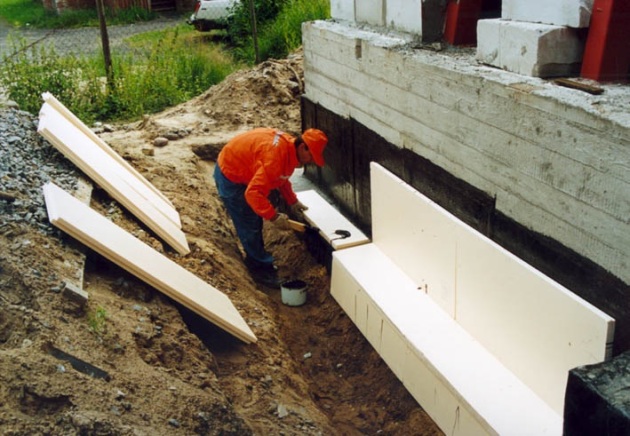
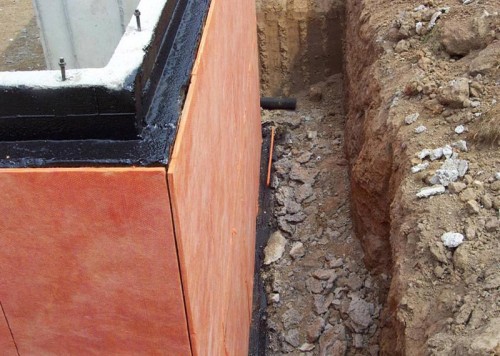
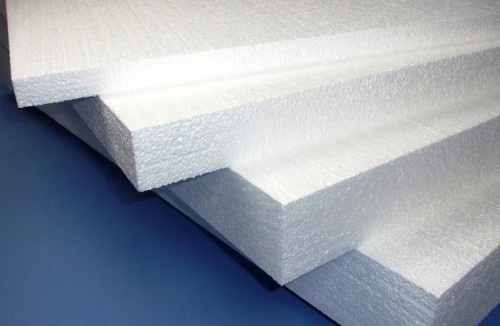
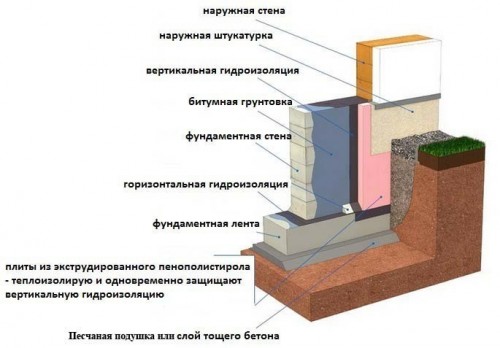
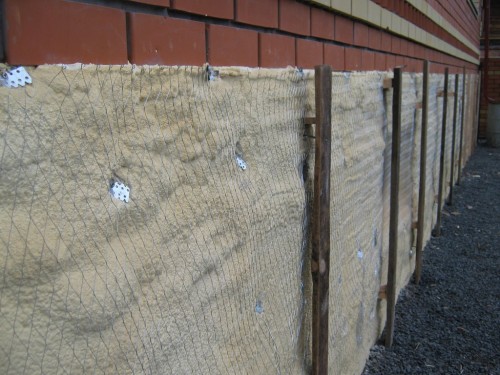












 Start a discussion ...
Start a discussion ...